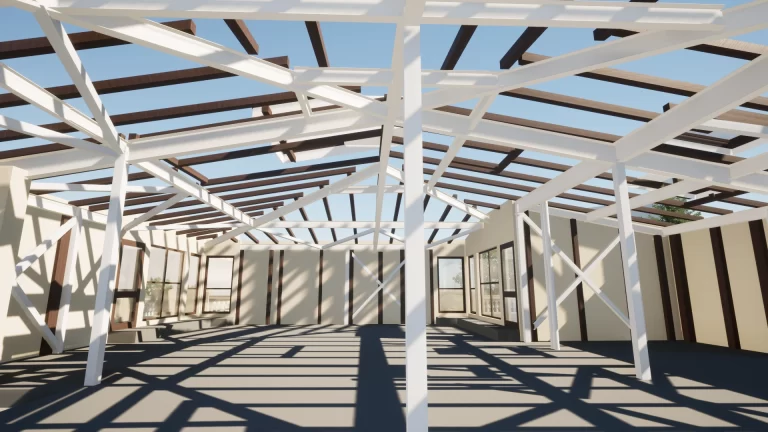3D Modeling
3D modeling - a valuable tool in any project.
What is 3D modeling
3D modeling is the process through which spatial data (point cloud) arising from the 3D scanning process is transformed into a mesh/solid/BIM deliverable.
While the point cloud provides a discontinuous three-dimensional representation of the scanned object/construction, the 3D modeling process generates a continuous model that accurately approximates the shape and dimension within a simulated 3D space.
The 3D model can be:
- mesh type – this one approximates the object studied through a continuous network of triangles that form a (mesh) surface replica.
- solid type – each entity of the modeled object/construction is approximated by three-dimensional geometric shapes.
- solid-BIM – an enhancement to the solid 3D model by incorporating descriptive attributes into the modeled objects/details.
- digital twin – a digital replica of a real object, system, or process. It integrates information from the real world and represents it in a virtual environment.
3D solid and BIM models are constructed at various levels of detail (LOD) based on the specifications requested by the client. The most common levels of detail are LOD 100, 200, 300.
The 3D modeling process generates a digital object – a replica of the scanned object, primarily used in design operations, but also for generating special effects and more.
What is obtained:
Through various processes and with the help of specialized software, a faithful 3D model of the building/object is obtained at a 1:1 scale in different formats requested by the client and at various levels of detail, depending on the objective of the project. The 3D model can be created in formats such as Revit, IFC, .dwg, .obj, .stl, or other formats requested by the client.
Benefits of 3D Modeling
- Efficient design and development - facilitates coordination and communication among all parties involved in a construction project, including architects, engineers, builders, and owners. Everyone can work with the same model, minimizing errors and saving resources.
- Quick 2D deliverables - enables the rapid generation of plans, sections, and façades, with any change in the 3D model automatically reflected in the deliverables.
- BIM - generates measurements and quantity lists in formats universally accepted by users.
- 3D Visualization - the representation of objects and spaces in a three-dimensional way enhances understanding and communication, proving valuable in design, architecture, and related fields.
- Modeling of any construction components.

3D modeling covers a wide range of industries:
- Redesigns, renovations, optimal space utilization, renderings
- Architecture (apartments, bungalows, resorts, shopping centers, hotels, schools, universities, restaurants, hospitals, residential buildings)
- Industrial construction (warehouses)
- Interior design, artworks (bridges, viaducts, tunnels), archaeological sites, roads, railways
- Film, animations, and video game industries

